I led product UX design and content design on projects for Cisco Spark/Webex in the areas of cloud computing and team collaboration.
My Roles
· UX design
· Content design
· User testing
· Design sprint facilitation
· Cat herding
Team
- · UX Designer/Content Designer
- · Product Managers x 3
- · Dev Lead
- · Design Manager
- · Marketing Lead
Year
- 2017
Contact
email@domain.com
000-000-000
Problem
Spark was losing market share to competing products due to a lack of a cohesive, centralized information source for developers.
Solution
- Design and build a knowledge base and community that would serve as a central repository of information, help articles, and Spark-related downloads.
My Roles
Product UX design
UX writing
User testing
Design sprint facilitator
Contact
email@domain.com
000-000-000
Product Design
Knowledge base:
Page & Navigation redesign
The existing navigation structure was outdated, cluttered, and made it difficult to navigate to relevant pages and topics. Product pages also did not reflect the new features available.
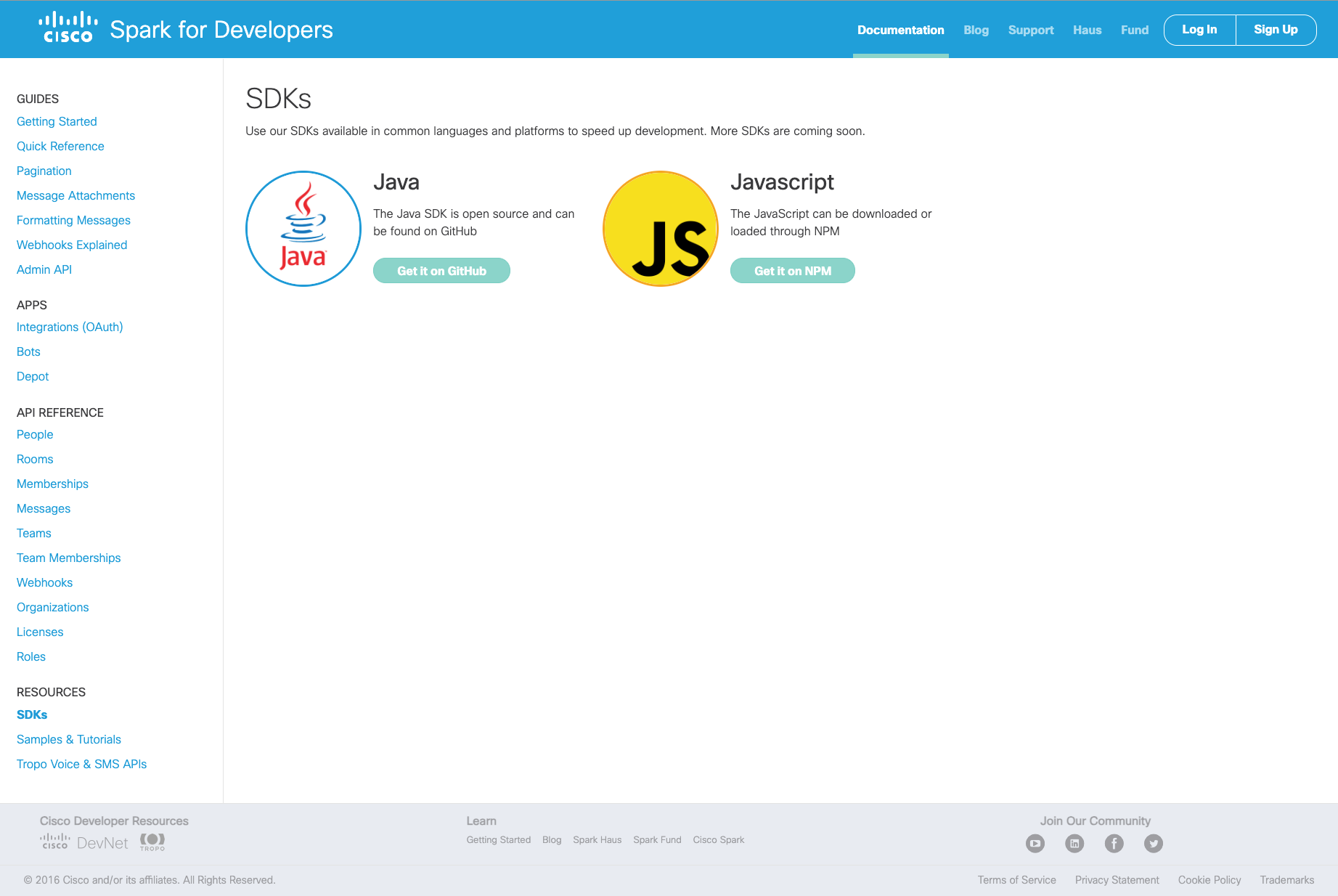
An example of an outdated product page along with the navigation structure at that time.
I redesigned the product page template to allow quick access to information with minimum friction. Along with that, I also redesigned the main navigation architecture to improve its ease of use, while also relabeling pages and sections.
Collaborating with a technical writer, we wrote sections of the product page that required information of a more technical nature.
With the new design, users could now quickly scan and locate the section they needed more efficiently, thus saving time.
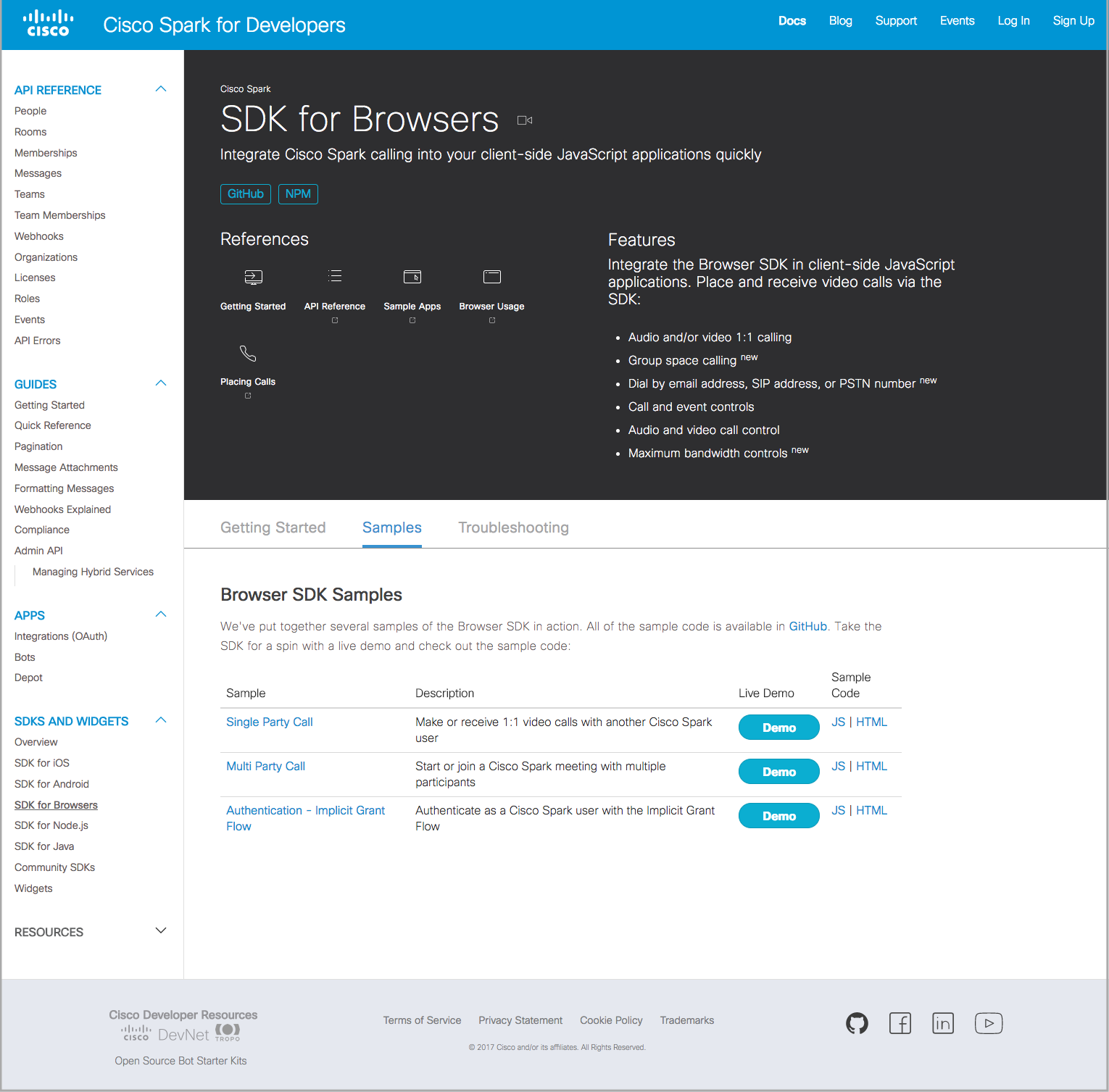
The redesigned product page with new layout and new navigation.
Content Design
Headlines
We needed to create interest in our target audience to get them to explore the Spark site. Audiences needed to be able to grasp the capabilities and benefits of Spark from the headlines at a glance.
In order to accomplish this, I wrote headlines that stayed away from mindless marketing prose, and instead spoke of usable features that would bring value to users. Since the headlines would keep them reading the rest of the page, it was crucial the headlines didn't sound like marketing fluff.
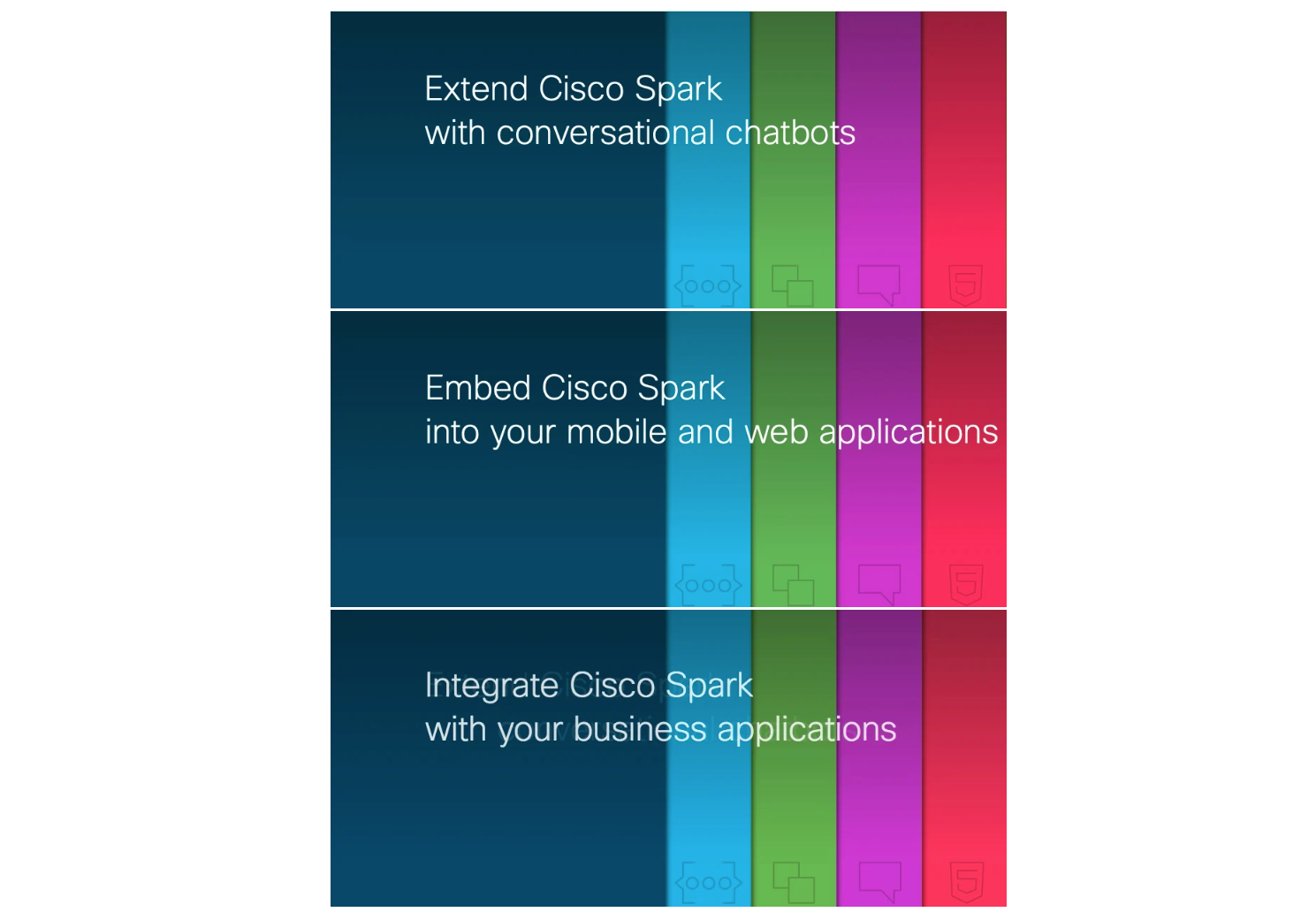
Customer Adoption Journey Stages
After experimenting with several approaches, I decided that Learn, Build, Grow were the three pillars upon which we would make developers consider using Cisco Spark in their products. This approach was chosen to signify the entire journey from start to success for the customer: they would first Learn about Spark and its capabilities, then Build it into their products, and then Grow their products and user base.
An added benefit to this approach was that it was a scalable idea that could be built upon in the future. New features could be rolled into one of the three sections, thus ensuring that the homepage would not end up being cluttered with new sections that would cause confusion.
I created original content that aimed to inform and persuade the target audience to learn about and try out Spark. This would not be a hard sell approach. Instead, the content would encourage our audience to see for themselves what benefits Spark could bring to their products.
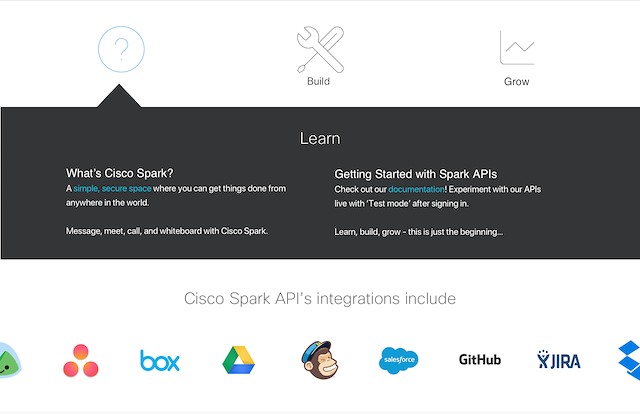
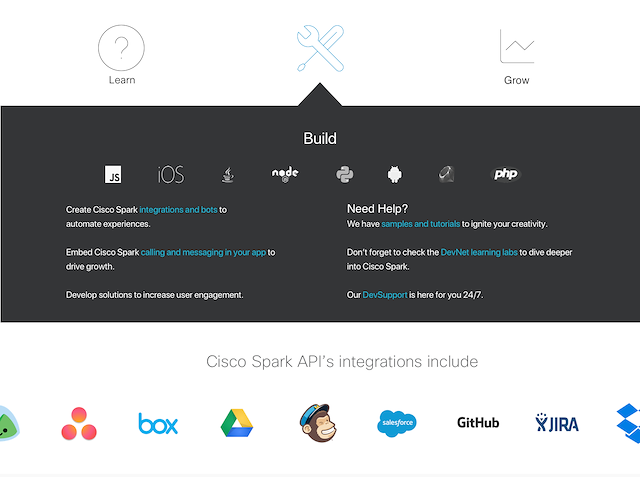
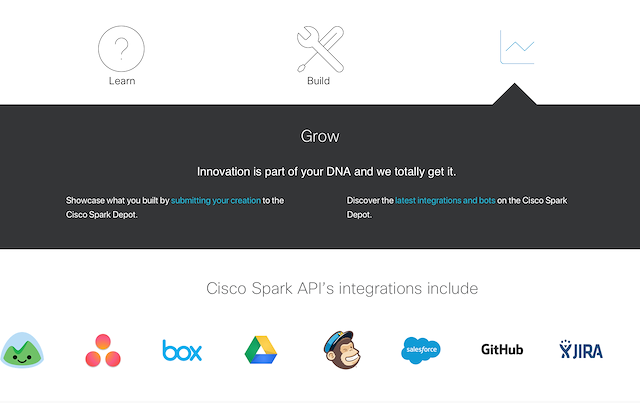
Final landing page
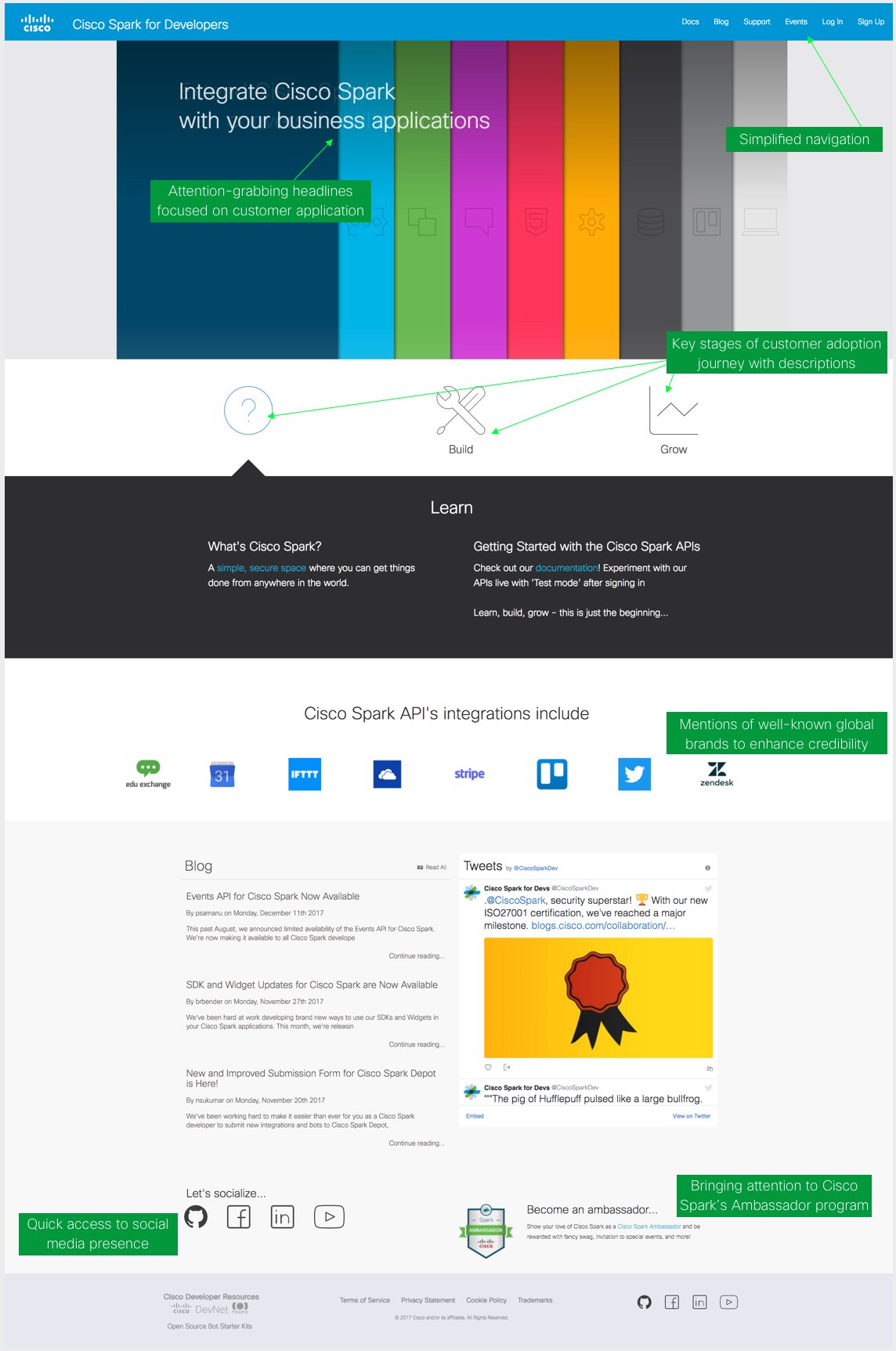
Impact
Awareness of Cisco Spark for Developers increased among the target audience (found through post-release surveys).
It also gave help center staff a single link to share with customers when assisting them, and provided marketing and sales teams a vital tool in connecting with developers globally.